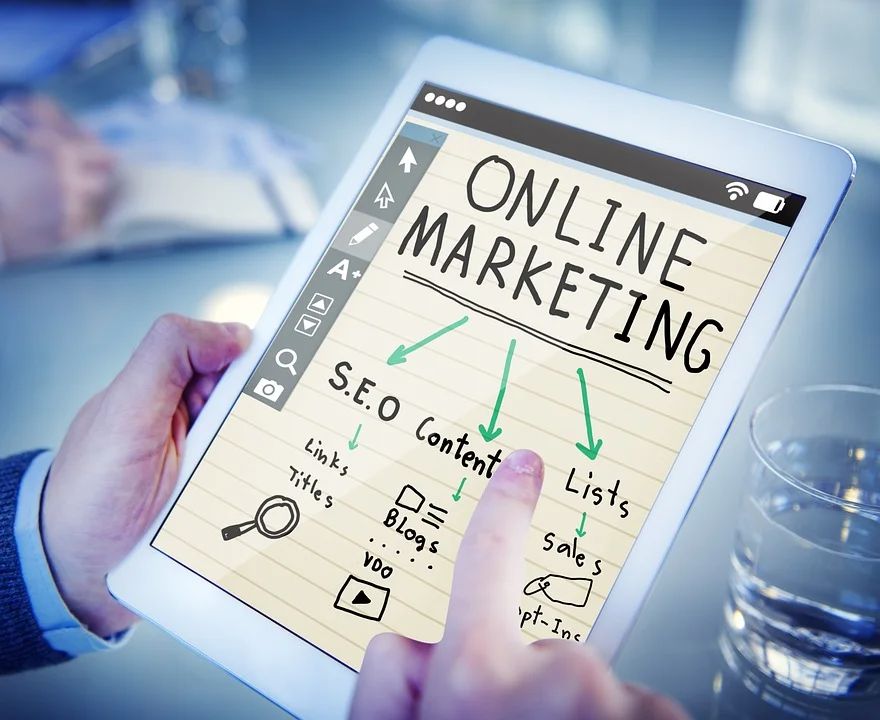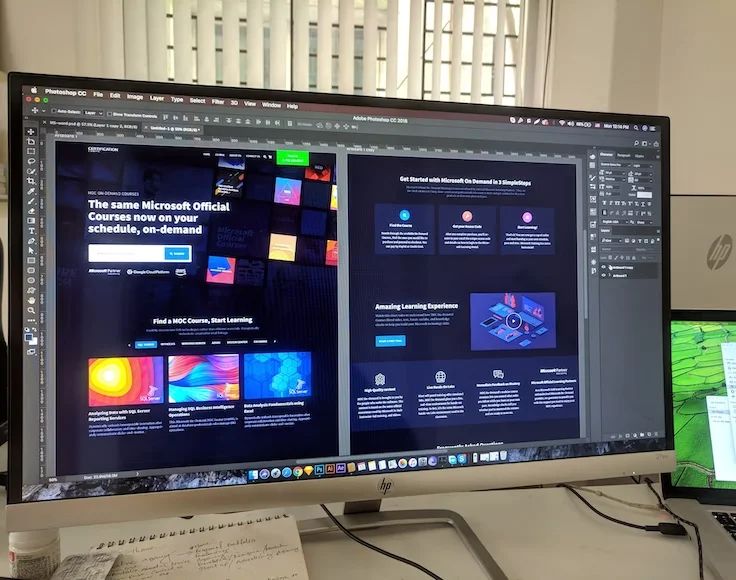Maintaining a powerful online presence is not easy for new business owners. Your website plays an important role in ensuring you reach the right target audience. Then how can you neglect your website when it is important in an online business?
Understanding the specific reason behind an increase in your bounce rate is not so easy. Luckily there are many tools out there that can help you figure out why your bounce rate is increasing. This article will tell you many interesting facts about why users leave a website.
Why Is It Important to Care About Your Bounce Rate?
Bounce rate can sometimes be a deceiving marketing term. It is an essential metric in web analytics as it measures the percentage of visitors that leave your website after visiting only one page. In simpler terms, it measures how many visitors immediately ‘bounce’ away from your site.
It’s not good for any business to have a high bounce rate as it affects overall website performance. It indicates how engaging and relevant your website is to your visitors. A high bounce rate suggests your website content or design is not worthy of your users’ attention. It also suggests that your website doesn’t meet the expectations of visitors, which in turn damages your website’s reputation and credibility.
Similarly, if users leave your site too early, they don’t get to the purchase part. Nobody wants a low conversation rate on their site. Moreover, SEO rankings also consider the bounce rate to judge the relevancy of a site. To sum it up, every business needs to watch out for its bounce rate.

15 Second Rule Website Bounce Rate
How long do users stay on web pages? What is a good average time spent on website? The answer to these questions is the 15-second rule. It simply means that, on average, a user stays on your website for not more than 15 seconds. So you must capture their attention in the first 15 seconds if you want them to stay longer.
The reason people leave your page too quickly or in less than 15 seconds can vary. The most common reasons behind a high bounce rate can be:
- Low Page Quality
- Irrelevant to Search Queries
- Completed Purpose
1- Low Page Quality
A poor or low page quality means it doesn’t load quickly or the site is not very responsive. Therefore, there’s nothing interesting for the user to engage with. Eventually, a user quickly leaves your website and moves to another page.
2- Irrelevant to Search Queries
If your page doesn’t have what a person came there looking for, they will bounce away. Either the user didn’t click on the right page or your page cheated them into clicking but it didn’t have their desired information. Both situations lead to an increase in the visitors turning away.
3- Completed Purpose
If people have immediately found the information they came on your page looking for then in that case they will also leave your website. Similarly, the purpose of their search query is completed and they leave your page satisfied.

Learn 20 Reasons People Leave a Website
Let’s talk about the main reasons “why users leave a website?”. We have prepared a list of 20 reasons behind a high bounce rate to answer your question about why users leave a website. These are the most common reasons that cause your potential customers to bounce away from your site. Read these in detail below:
- Navigation Problems
- Less Responsiveness
- Site Not Working
- Cluttered Page Design
- Poor Website Copy
- Unwanted Ads
- Harsh Visuals
- Low Website Scannabilty
- Problem in CTA
- Insecure Website
- Website Not Optimized for Mobile
- Auto Playing Videos and Stuff
- Boring Website Design and Layout
- Increased Cognitive Load
- Images Don’t Load Quickly
- Lack of Latest Related Content
- Targeting the Wrong Audience
- Not up to User’s Expectations
- Missing Contact and About Info
- Your SEO Is Weak
1- Navigation Problems
How to lose a website visitor in just 15 seconds? Make a website that is hard to navigate.
Poor website structure and layout design make it hard to navigate a website for users. Users won’t be able to find what they’re looking for if your website is difficult to navigate. They will look around for a bit, but after a few clicks, they will give up and move on. So you need to take things seriously when it comes to creating an easy-to-navigate user interface.
One of the best ways to eliminate this problem is to get insights into your user’s navigation patterns. Prioritize the content based on what you think your users will navigate first. Also, focus on the design pattern that reduces a user’s cognitive load. Any company with a relatively sizable product line must ensure its website has simple menus that correctly classify the goods.
2- Less Responsiveness
A website’s responsiveness is measured by how quickly it loads and reacts to user input. A high bounce rate can result from users becoming impatient and frustrated with a slow-loading page.
The bounce rate can be decreased, and low site responsiveness can be fixed in a number of ways. One method is to optimize the website’s photos and videos to minimize their file sizes. Optimizing large files can increase site speed because they can contribute to slow page loads.
Reduce the amount of HTTP requests necessary to load the website, as this is another technique to increase website responsiveness. You can use a single CSS and JavaScript file to achieve this.
3- Site Not Working
Users may grow irritated and leave a website when it isn’t functioning properly. Broken links, slow loading times, error warnings, and other technological problems like 404 pages might all be to blame for this. Users may believe the website is unreliable or unprofessional if they experience these problems, which can harm its credibility and reputation.
Website owners need to ensure their websites are reliable and offer a satisfying customer experience. Reducing the number of people who leave a website due to technical difficulties is possible by regularly testing and monitoring its functionality, responding quickly to any technical problems, and giving clear and simple error messages.
4- Cluttered Page Design
A web page with an undisciplined or confused arrangement of visual elements or excessive amounts of content is referred to as having a cluttered page design. Users may struggle to find the information they require as a result, which may overwhelm or irritate them.
Remember that a good page design is not about aesthetics and visual content. This is why UI/UX designers work hard and plan the website layout efficiently so that it doesn’t look like a clutter of design elements. Users may be less inclined to interact with the material or perform the desired action when a web page is busy and visually unpleasant.
Website owners can concentrate on designing a clear, organized layout that gives the most crucial material the highest priority in order to avoid a cluttered page design and lower the bounce rate. Users can browse the page and discover the information they need more quickly and simply by using clear headers and subheadings, whitespace, and visual hierarchy.

5- Poor Website Copy
Website content, such as text, headlines, and other written material, is called website copywriting. The bounce rate of a website can be significantly impacted by poor copywriting. By failing to captivate visitors and clearly convey the website’s message, poor website copywriting is one of the key reasons bounce rates go up.
Visitors may quickly lose interest and leave the website if the material is badly written, unclear, or challenging. Visitors may not feel prompted to investigate the website further or take the intended action if the copy is unpleasant or dull.
Website owners should concentrate on producing high-quality content that engages visitors, successfully conveys the website’s message, and offers the information visitors are seeking in order to prevent poor website copywriting from raising the bounce rate.
6- Unwanted Ads
Unwanted or pop-up ads can significantly affect a website’s bounce rate, which is the percentage of visitors that depart after seeing just one page. Visitors frequently find these kinds of adverts distracting and disruptive, which can result in a bad user experience and drive them to abandon the website.

7- Harsh Visuals
Do you know about the Role of Visual Design in User Experience? Don’t take the visual design as just a part of a website’s aesthetics. Visual design helps designers to create unity and harmony in their user experience design. If you are not careful with effectively using visual design, you will end up with harsh and cluttered visuals that drive away customers.
Website designs that are aesthetically unpleasant, excessive, or jarring to the eye are referred to as harsh visuals. Harsh aesthetics might include things like garish color schemes, overuse of movement or graphics, and disorganized layouts that make it difficult for users to traverse the website.
Website owners should prioritize a clean and basic design that is straightforward to navigate and aesthetically pleasing in order to prevent harsh graphics and build a visually appealing and user-friendly website.
Website owners may boost engagement, conversions, and overall success by putting the user experience first and building a visually beautiful and user-friendly website.
Learn about Gradient Colors in UX design.
8- Low Website Scannabilty
The capacity of users to quickly scan and comprehend a web site’s material is referred to as website scannability. Visitors may struggle to find the information they require on a website with poor scannability, which may cause frustration and a high bounce rate. Low website scannability can make it challenging for users to comprehend the value of the supplied goods or services, which can lower engagement and conversion rates.
Website owners should prioritize user experience and build a visually appealing and simple-to-navigate site to avoid low website scannability and lower bounce rates. Concise and easy-to-understand language, using clear headers, subheadings, and bullet points to break up the material, and ensuring that vital information is clearly presented on the website are some ways to achieve better website scannability.

9- Problem in CTA
Never neglect the power of a clear and concise CTA. Some online entrepreneurs aren’t aware of the fact that CTAs influence conversion and attract customers. A CTA is a prompt on a webpage, blog/article, services page, etc., such as “Sign Up Now,” “Add to Cart,” or “Let’s Work Together.”
If your CTA is unclear and confusing, users will not understand the next step they should take. They will be frustrated, and in the end, they will abandon your website. Also, if the CTA is difficult to find, the user may not bother to look for it. In short, using a clear, compelling, and short CTA is essential for guiding users through their purchasing journey.
10- Insecure Website
What makes a website insecure? An insecure website can also lead customers away for several reasons. Customers are concerned about a site’s credibility and security because it can access their personal and financial information. If a website is not secure, it can cause a breach in customers’ private data.
Without HTTPS encryption, which encrypts data while being transferred between the user’s browser and the website server, a website is open to attacks such as eavesdropping and man-in-the-middle attacks. A website should employ HTTPS encryption to secure sensitive data, such as credit cards or social security numbers, that it obtains.
11- Website Not Optimized for Mobile
We all know that optimizing websites for mobile interfaces is necessary today. Strategies like mobile-first design have helped designers and mobile app developers make websites that are well-optimized on any device. When a website is not mobile-friendly, it can be challenging to navigate since the text and images are too small to read or need a lot of scrolling and zooming. Users may become irritated by this and leave the site in favor of another that is more mobile-friendly.
A website should have a responsive design that adapts to various screen sizes and orientations in order to be mobile-optimized. Also, the website should be created with touch-based interactions in mind, including menus and buttons that are large and simple to tap on touch screens. Any forms or other interactive features should be created with mobile users in mind, and images and videos should be optimized for mobile devices to ensure quick loading times.
Also Read the 5 Interesting Tips for Mobile App Development for Small Business

12- Auto-Playing Videos and Stuff
Auto-playing videos and stuff can cause customers an intrusive and disruptive browsing experience, just like the pop-up ads. Imagine if a user is reading an article with their full attention and a video auto plays in between; it will disrupt the reader’s flow. This can also cause a user’s internet connection to slow down as video uses more data.
Moreover, it can be an unpleasant experience for users if a media that is completely irrelevant to their search query starts playing in the middle of navigation. When a user is browsing a news website, for instance, and a video about a completely different subject begins to play, it can be frustrating and make them lose interest in the page.
In short, you should not add auto-playing stuff to your web pages as it can also be a cause behind why users leave a website. It might seem a creative way to grab a user’s attention but can most often result in the opposite.
13- Boring Website Design and Layout
Never make this web design mistake of creating a boring layout. It can be a major factor in turning away customers from your website. A boring website design lacks a visual appeal, has slower loading times, poor navigation, and is not optimized for mobile. Websites must concentrate on delivering a fun user experience.
This can involve employing aesthetically pleasing graphics and design components, delivering simple navigation, providing interactive features and interesting content, ensuring the website loads quickly, and optimizing it for mobile use. Businesses may assist in keeping customers engaged and lower the likelihood that users will leave the website by putting the user’s experience first by creating an engaging and visually appealing website.

14- Increased Cognitive Load
The term “cognitive load” describes the processing capacity or mental effort needed to execute a task. Users may become frustrated and lose interest in a website if it creates a heavy cognitive strain on them, ultimately resulting in them leaving.
Customers can abandon a website if it places a heavy cognitive burden on them. Websites should emphasize having a user-friendly design that is simple to navigate and delivers information in a clear and succinct way to prevent this. To achieve this, the website should have a clear layout, brief information, and a uniform design. Businesses may assist customers in staying engaged and lowering the chance that users will leave the website by minimizing cognitive load.
15- Images Don’t Load Quickly
Slow-loading images is a very common factor behind users abandoning a website. This is why it is recommended to design a responsive website interface. Businesses should optimize their photos for the web to avoid graphics that load slowly. This can involve reducing the size of photos by compressing them, using the right image file type (such as JPEG or PNG), and ensuring that images are formatted and optimized for use on the web.
It’s crucial for businesses to regularly test the speed at which images load on their websites. This can pinpoint any issues with images that take a long time to load and provide companies the chance to take action to enhance the user experience.
16- Lack of Latest Related Content
Users expect to find new and updated information whenever they visit your site. They will assume that the website is not regularly maintained or relevant if they don’t find it. Businesses should prioritize regularly updating their website with new and useful information in order to avoid a shortage of related content. This can involve writing blog postings, developing new pages, updating current pages, and sharing timely information about news or events in the business.
17- Targeting the Wrong Audience
Sometimes we visit a website because it has an attractive link that seems like what we are looking for. But when we are on the webpage, we feel like it’s totally irrelevant and doesn’t have what we wanted. This is what happens when websites are targeting the wrong audience.
Because everyone has various likes and preferences, it may not be very appealing to one audience to visit a website designed for another. For instance, elderly men who are more interested in DIY home repair projects will generally not find much interest in a website that provides contemporary clothing and accessories for young ladies.
So how can a website prevent choosing the incorrect audience to target? It all comes down to knowing your target market and what they want. This involves gathering market data, reviewing website analytics, or even speaking with your consumers to gain their opinions.
18- Not up to User’s Expectations
Users have expectations about what they will find when they visit a website. They can seek specialized knowledge, a certain degree of utility, or style. The user is likely to be let down and may even abandon the website if it doesn’t meet their expectations.
So why is this important? When a user’s expectations aren’t met, it might harm the website’s reputation and perhaps result in missed sales. User experience and website design should be given top priority by businesses since users are more likely to return to a website that fulfills their needs and surpasses their expectations.

19- Missing Contact and About Info
Users frequently inquire about the company or organization operating a website when they visit it. They can be curious to know more about the background of the business, its goals, core principles, or the employees. Users may need to contact the company for various reasons, including making a purchase, asking a question, or offering feedback.
Users may grow annoyed and stop trying to contact or learn more about the company if a website lacks this important data. This may result in missed revenue opportunities and a bad user experience for the user.
Building user trust and establishing credibility as a business depends on making contact and information clear and easily available. Users are more likely to trust a company and feel confident in their choice to engage with or purchase from it if they believe they can easily get the information they need.
20- Your SEO Is Weak
Lastly, weak SEO is the most important reason behind users leaving a website. This may be caused by a number of things, including the wrong keywords or phrases, low-quality content, or a deficiency of inbound links. A weak SEO can be improved in the following ways:
- Using relevant keywords on your website and conducting keyword research.
- Developing useful, high-quality content that benefits your users.
- Optimizing the meta titles and descriptions of your website.
- Constructing inbound links from trustworthy sources.
- Ensuring that your website is responsive to mobile devices and loads quickly.
Final Thoughts
In summary, analyzing your bounce rate is crucial for optimizing your website’s performance and user experience. The reason why users leave a website too early is mainly due to less relevancy or responsiveness. But there are several other factors that can increase your bounce rate. You must follow best practices to ensure your site’s bounce rate is minimal.
You can easily improve your conversion if you are mindful of your bounce rate. It can help you identify issues with your site’s design, content, and functionality, allowing you to make changes that improve your site’s engagement and conversion rates. Watch out for the 20 main reasons we discussed in this article about why users leave a website and keep improving their user experience.
FAQs
Why Are Most Websites Unsuccessful in the Market?
There can be many reasons behind a website’s failure, but the most common reason could be a slow website. If your website is not fast and responsive enough, users will quickly leave and visit another page. Regardless of the industry you are working in, watching out for your website’s loading speed is the most important.
What Is a Good Average Time Spent on a Website?
The device type, industry, and type of target audience are just a few variables that affect a decent average time on a page. However, 52 seconds across various industries is a decent baseline for the average time spent on a page. According to 20 billion user session data, B2B websites have the highest Average Time On Page, roughly 82 seconds.




